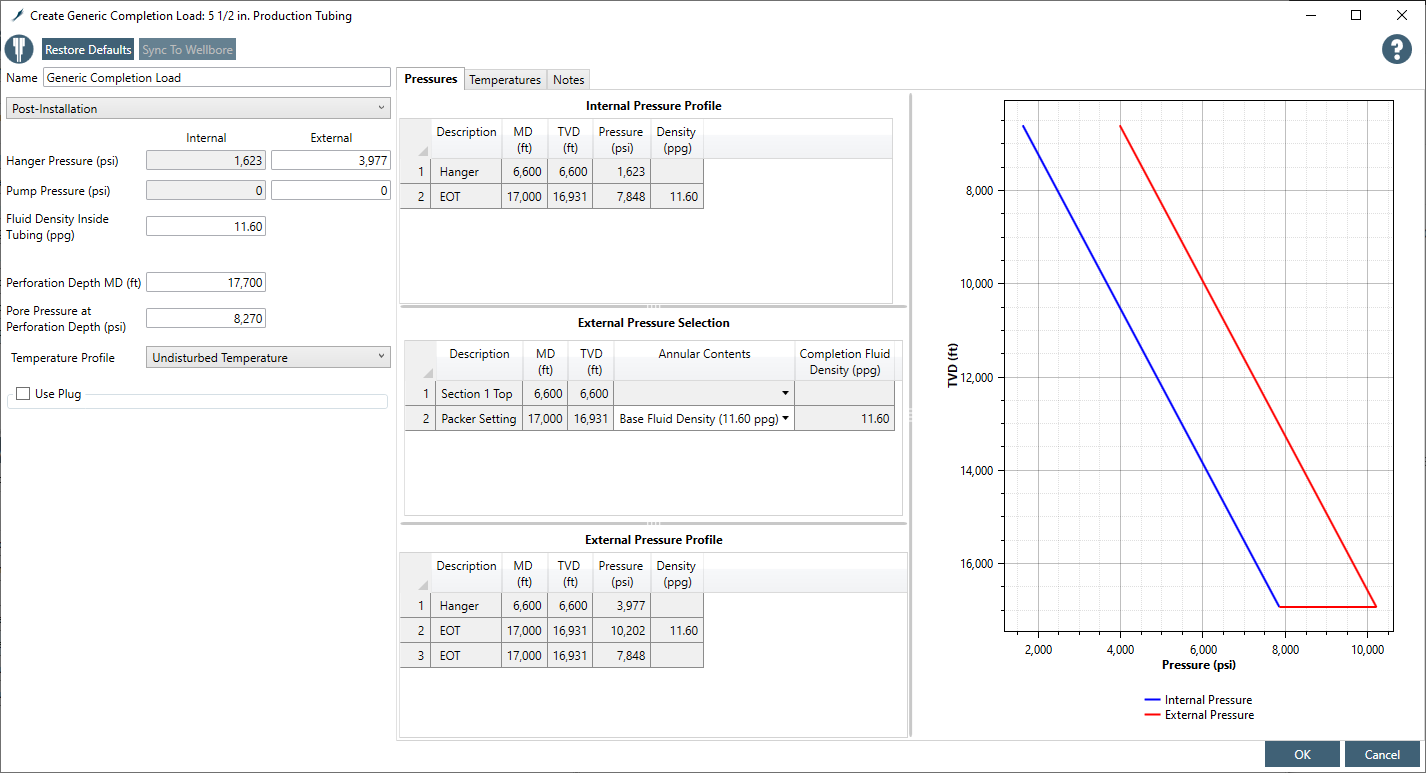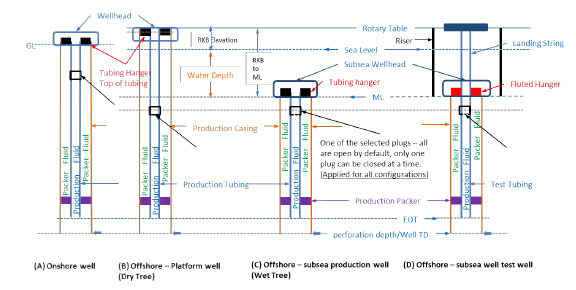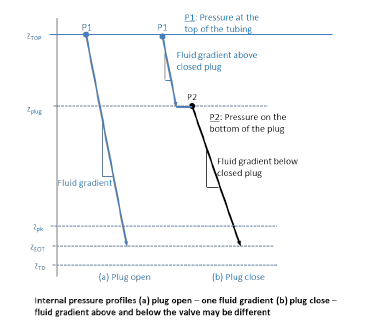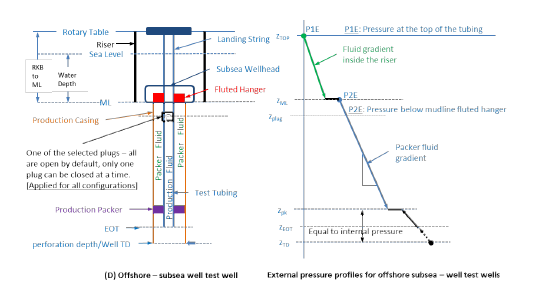¶ Generic Completion Load
This section discusses a generalized standard completion load for production tubing. In doing so, this document describes various well types and introduces completion related equipment. It also describes how internal and external pressure profiles should be constructed for a generic completion load.

¶ Well Types
The figure below shows the configuration of the production tubing for four different types of wells. From left to right, they show:
- an onshore well without a riser
- an offshore platform well
- an offshore subsea production well where the riser is shown as reference only because the riser is only used during drilling; after drilling the well is completed with a subsea wellhead at the mudline
- an offshore subsea well test well
The production tubing extends to the surface through the subsea wellhead. The production tubing annulus above the mudline is between the production tubing and the riser, whereas below the mudline, i.e. below the subsea wellhead, it is between the production tubing and the production casing.
The below image also shows only one valve inside the production tubing for illustration.

¶ Internal Pressure Profile
Internal pressure calculation starts at the top of the tubing, and is 0 psi by default. The user can change this value.
Next, select a plug that needs to be closed from the list of completion plugs, created in the Equipment tab, and a fluid density above the valve. If no valve is selected, a single fluid density will be used for the entire length of the tubing.
The pressure between the top of tubing and the valve is given by -

P2, the pressure below the closed valve, if any, is given by using pore pressure at the default perforation depth (i.e. well TD) and the default gradient below the closed valve:

The below image illustrates the internal pressure profiles with valve open and closed.

¶ Internal Pressure from Thermal Calculation
If a plug is in use, the internal pressure profile below the plug can be imported from a thermal case calculation. To do this, select a thermal case to serve as the thermal profile for the tubing string. The pressure calculation from that case will be imported from the plug depth to EOT.
¶ Leak Directly Below Plug
Optionally, the calculation can assume a leak directly below the plug depth. To enable this, tick the "Leak Directly Below Plug" checkbox. When selected, this causes the pressure inside and outside the tubing to equalize at the plug depth.
¶ External Pressure Profile
The figure below illustrates the external pressure profile. Pressures below the packer are the same as the internal pressures.
